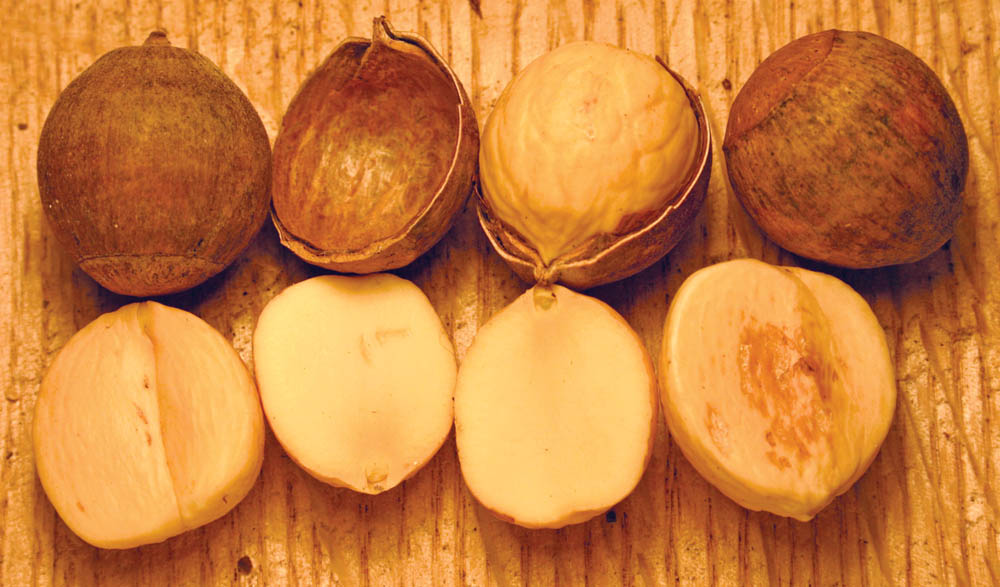


currently unavailable The Cottam Bur Oaks I originally received were originally grown from Clayton Berg in Montana. I started growing a few of his trees at my farm. He lived in such a cold area with short season, that I thought it might be best to find out for sure if these trees would grow in southern Michigan. I was intrigued by these crosses or strains. I knew the Ashworth bur oak was super cold hardy. What about this? I had heard that he had exchanged or contributed to the Cottam hybrid oak project with Eugene Cottam in Utah when it was active and he had some trees that had survived his blistering cold weather of minus 40 F or more. I knew this was one of the coldest areas in the country and any tree is a good tree if it can fruit in the short season as well as withstand the wind and cold of northern Montana.
As time went I kept a couple of the trees in my plantings. I am glad I did. The small acorns are produced in great abundance every other year. The parent tee is rather dense in branching and was slow growing compared to other bur oaks I have grown. This seed selection represents the coldest bur oak type I have at my farm. It is likely this selection could put oak on the map easily within zone 3. The acorns drop free of the cap starting in late August and early September. The acorns tend to form dense clusters on the branches. The branches are compact on the tree as well. This helps with the yields versus fruiting only on the ends of the branches.
This would be a good bur oak to produce for cold short season areas and could easily provide an edible acorn type crop in super short season areas. The fact that the acorns ripen, drop free of the cap and are generally low in tannin makes it an ideal tree to grow in areas where establishing a tree is not easy. Further selections could be done with this type as it is more compact and branchy making it ideal for urban situations or mixed plantings where you have other shrubs competing.
Varietal: 'Giving' This selection was done because of its high yields and dense fruiting clusters on a small tree. The small acorns are produced every other year usually and are quite consistent in yields. No weevils have been found in the acorns. The tree is of a smaller structure than most bur oak trees. The tree can be limbed up to form a single straight trunk but the tree isn't apically dominant like many bur oaks. The acorns are edible but require leaching to consume. This is one of the most northern bur oaks available as most selections originate from the midwestern U.S. 'Giving' lives up to its name with its acorn production and could easily be used for an acorn production for humans or animals.
| Plant Specs |
| Genus & Species |
Quercus macrocarpa Northern |
| Seed Source |
Michigan |
| Hardiness |
minus 40 F or so. |
| Height (ft) |
30 to 50 ft. with equal width |
| Pollination Requirements |
Self pollinating. Best to have other bur oaks or seedlings of itself nearby to increase yields to some extent. |
| Soil |
Adaptable from clay to sand. Easy to grow. |
| Ease of Cultivation |
A good selection for cold areas and short seasons. Could easily be developed more fully if grown out in an actual northern Minnesota and Alaska climates to test it fully using seeds from this strain and cultivar. Has the greatest potential for areas where few trees can survive. Slower growing than other bur oaks but establishes the same with both a long tap root and many small side hair roots. May take up to 10 years from seed to fruit. |
